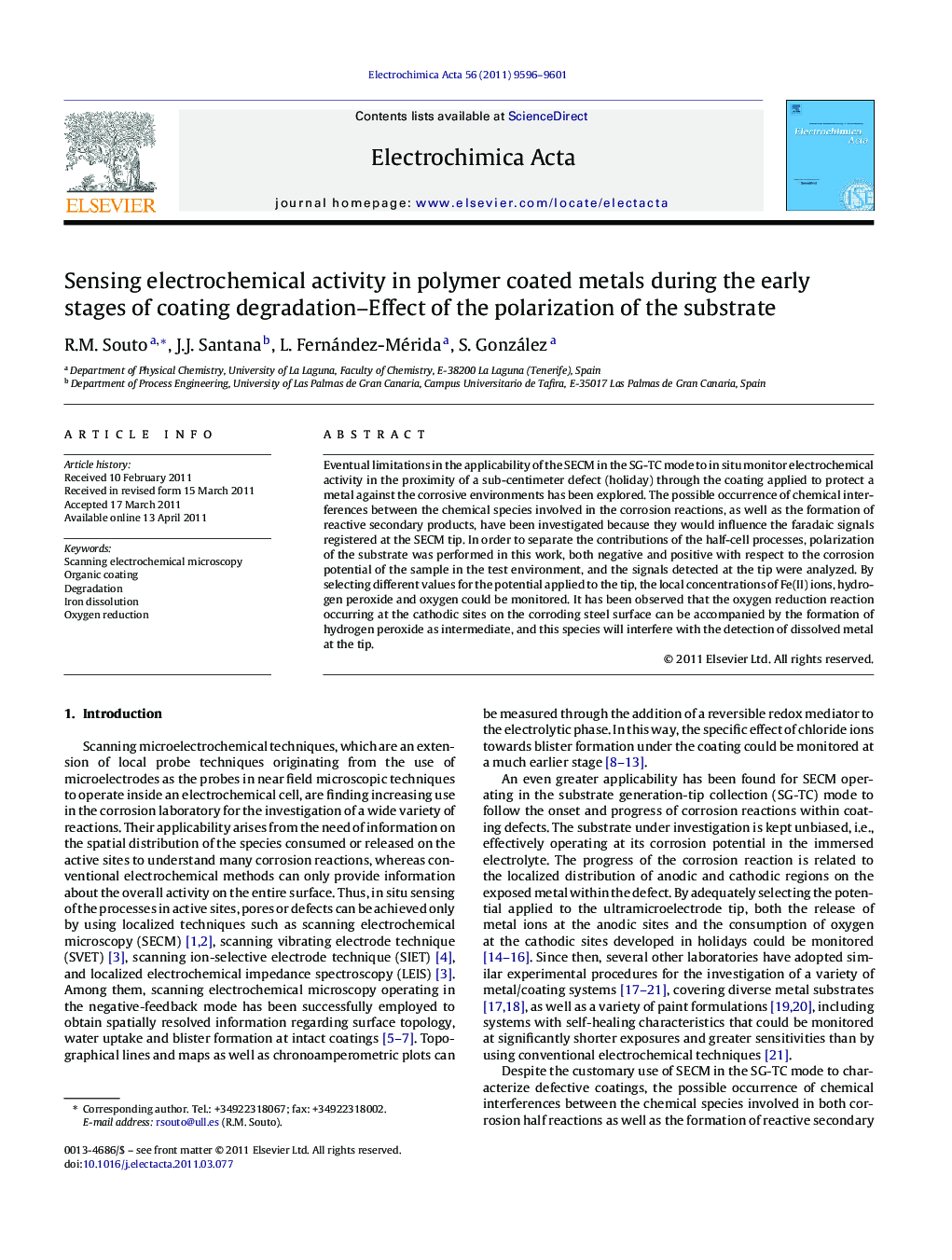| Article ID | Journal | Published Year | Pages | File Type |
|---|---|---|---|---|
| 190363 | Electrochimica Acta | 2011 | 6 Pages |
Eventual limitations in the applicability of the SECM in the SG-TC mode to in situ monitor electrochemical activity in the proximity of a sub-centimeter defect (holiday) through the coating applied to protect a metal against the corrosive environments has been explored. The possible occurrence of chemical interferences between the chemical species involved in the corrosion reactions, as well as the formation of reactive secondary products, have been investigated because they would influence the faradaic signals registered at the SECM tip. In order to separate the contributions of the half-cell processes, polarization of the substrate was performed in this work, both negative and positive with respect to the corrosion potential of the sample in the test environment, and the signals detected at the tip were analyzed. By selecting different values for the potential applied to the tip, the local concentrations of Fe(II) ions, hydrogen peroxide and oxygen could be monitored. It has been observed that the oxygen reduction reaction occurring at the cathodic sites on the corroding steel surface can be accompanied by the formation of hydrogen peroxide as intermediate, and this species will interfere with the detection of dissolved metal at the tip.
